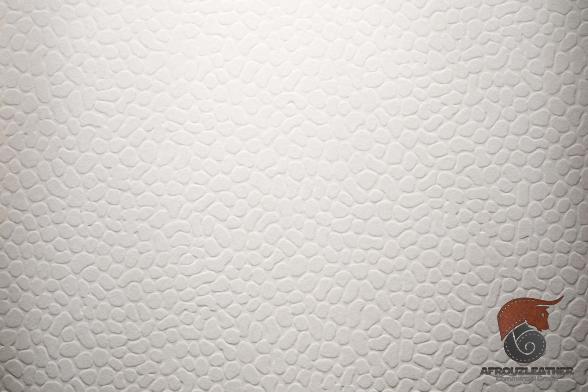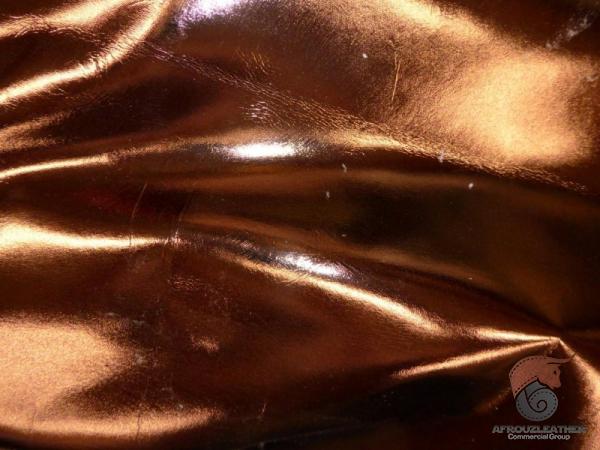When it comes to leather products, the choice of material plays a significant role in determining the overall quality and characteristics. Lambskin leather and cow leather are two popular options used in the production of various items, including clothing, accessories, and furniture. While both offer their own unique qualities, understanding the differences between these two types of leather is crucial for making informed purchasing decisions. This article aims to shed light on the distinctions between lambskin leather and cow leather, exploring their properties, usage, and considerations for choosing one over the other. 1. Properties of Lambskin Leather: Lambskin leather, as the name suggests, is derived from the skin of young lambs. This type of leather is recognized for its soft, supple texture, making it an excellent choice for garments and delicate accessories. Some notable properties of lambskin leather include: a) Softness: Lambskin leather is highly regarded for its exceptional softness. The young age of lambs contributes to the fine fiber structure of the leather, resulting in a smooth and luxurious feel. b) Lightweight: Compared to cow leather, lambskin leather is relatively lightweight, adding to its suitability for clothing items. Its lightweight nature ensures that garments made from this material provide comfort and ease of movement.
leather
 c) Breathability: Lambskin leather often possesses a degree of breathability, allowing it to regulate temperature more effectively. This quality makes it an ideal choice for clothing in both warm and cool climates. d) Elasticity: Lambskin leather exhibits excellent elasticity, enabling garments and accessories made from this material to conform to body shapes more closely. This elasticity aids in enhancing the overall fit and comfort. 2. Properties of Cow Leather: Cow leather is the most widely used type of leather due to its durability and versatility. Derived from adult cows, it offers distinct characteristics that appeal to a broader range of consumers. The following properties are commonly associated with cow leather: a) Durability: One of the standout features of cow leather is its robustness and longevity. The thicker fibers in cowhide contribute to its superior resistance against wear and tear, making it suitable for applications that require a higher level of durability, such as footwear, upholstery, and accessories. b) Strength: Cow leather is known for its inherent strength, allowing it to withstand heavy usage and resist stretching. This strength makes it a preferred choice for products that need to endure rigorous conditions. c) Texture: Compared to lambskin leather, cow leather has a firmer texture, often exhibiting natural grain patterns.
c) Breathability: Lambskin leather often possesses a degree of breathability, allowing it to regulate temperature more effectively. This quality makes it an ideal choice for clothing in both warm and cool climates. d) Elasticity: Lambskin leather exhibits excellent elasticity, enabling garments and accessories made from this material to conform to body shapes more closely. This elasticity aids in enhancing the overall fit and comfort. 2. Properties of Cow Leather: Cow leather is the most widely used type of leather due to its durability and versatility. Derived from adult cows, it offers distinct characteristics that appeal to a broader range of consumers. The following properties are commonly associated with cow leather: a) Durability: One of the standout features of cow leather is its robustness and longevity. The thicker fibers in cowhide contribute to its superior resistance against wear and tear, making it suitable for applications that require a higher level of durability, such as footwear, upholstery, and accessories. b) Strength: Cow leather is known for its inherent strength, allowing it to withstand heavy usage and resist stretching. This strength makes it a preferred choice for products that need to endure rigorous conditions. c) Texture: Compared to lambskin leather, cow leather has a firmer texture, often exhibiting natural grain patterns.
Specifications of leather
 These textures lend distinctive character to leather goods and provide a rustic appeal. d) Flexibility: While cow leather is generally stiffer than lambskin, it still possesses a reasonable degree of flexibility. This allows it to be shaped and molded without losing its structural integrity, enhancing its versatility in a wide range of applications. 3. Usage Scenarios: While lambskin and cow leather share some common applications, they also differ in terms of their specific usage scenarios. The following are typical areas where each type of leather is preferred: a) Lambskin Leather: i. Garments: Lambskin leather is widely used in the production of high-end jackets, coats, and clothing items due to its softness, lightweight nature, and ability to drape well. ii. Accessories: This leather is also a popular choice for crafting accessories such as gloves, handbags, and small leather goods. The luxurious feel and delicate appearance of lambskin lend an air of sophistication to these items. iii. Upholstery: Although less common than cow leather, lambskin may be used for select upholstered items, particularly in luxurious or specialized settings. b) Cow Leather: i. Footwear: Cow leather is commonly utilized in the shoe manufacturing industry due to its durability, strength, and ability to withstand extensive use and varying weather conditions. ii. Furniture: The sturdiness and resistance of cow leather make it a preferred choice for upholstered furniture items, ensuring that they remain intact even with constant use. iii. Accessories: Belts, wallets, and backpacks are often made from cow leather owing to its durability and classic aesthetic. The firmness of cow leather enables these items to retain their shape for an extended period. 4. Considerations When Choosing Between Lambskin and Cow Leather: When making a decision between lambskin and cow leather, several factors come into play. Understanding these considerations will help consumers make an educated choice: a) Purpose: Consider the intended use of the leather product.
These textures lend distinctive character to leather goods and provide a rustic appeal. d) Flexibility: While cow leather is generally stiffer than lambskin, it still possesses a reasonable degree of flexibility. This allows it to be shaped and molded without losing its structural integrity, enhancing its versatility in a wide range of applications. 3. Usage Scenarios: While lambskin and cow leather share some common applications, they also differ in terms of their specific usage scenarios. The following are typical areas where each type of leather is preferred: a) Lambskin Leather: i. Garments: Lambskin leather is widely used in the production of high-end jackets, coats, and clothing items due to its softness, lightweight nature, and ability to drape well. ii. Accessories: This leather is also a popular choice for crafting accessories such as gloves, handbags, and small leather goods. The luxurious feel and delicate appearance of lambskin lend an air of sophistication to these items. iii. Upholstery: Although less common than cow leather, lambskin may be used for select upholstered items, particularly in luxurious or specialized settings. b) Cow Leather: i. Footwear: Cow leather is commonly utilized in the shoe manufacturing industry due to its durability, strength, and ability to withstand extensive use and varying weather conditions. ii. Furniture: The sturdiness and resistance of cow leather make it a preferred choice for upholstered furniture items, ensuring that they remain intact even with constant use. iii. Accessories: Belts, wallets, and backpacks are often made from cow leather owing to its durability and classic aesthetic. The firmness of cow leather enables these items to retain their shape for an extended period. 4. Considerations When Choosing Between Lambskin and Cow Leather: When making a decision between lambskin and cow leather, several factors come into play. Understanding these considerations will help consumers make an educated choice: a) Purpose: Consider the intended use of the leather product.
buy leather
 If softness and luxury are the top priorities, lambskin leather is more suitable. If durability and strength are crucial, cow leather is the better option. b) Affordability: Lambskin leather is generally more expensive due to its limited availability and the delicate nature of the production process. Cow leather, being more plentiful, is often more budget-friendly. c) Lifestyle and Maintenance: Take into account the lifestyle and level of maintenance you are willing to commit to. Lambskin leather requires more care and attention to maintain its beauty, while cow leather tends to be more forgiving and may require less frequent maintenance. d) Aesthetic Preferences: Consider the overall aesthetic and texture you want the leather product to possess. Lambskin leather often offers a softer, smoother, and more refined appearance, while cow leather provides a rugged, natural look. Conclusion: In summary, choosing between lambskin leather and cow leather depends on several factors, including desired features, purpose, durability requirements, affordability, and personal preferences. While lambskin leather offers luxurious softness, lightweight nature, and excellent draping qualities, cow leather stands out with its durability, strength, and robustness. Understanding the properties, usage scenarios, and considerations outlined in this article will empower consumers to make informed decisions when purchasing leather products while ensuring that their choices align with their specific needs and preferences.
If softness and luxury are the top priorities, lambskin leather is more suitable. If durability and strength are crucial, cow leather is the better option. b) Affordability: Lambskin leather is generally more expensive due to its limited availability and the delicate nature of the production process. Cow leather, being more plentiful, is often more budget-friendly. c) Lifestyle and Maintenance: Take into account the lifestyle and level of maintenance you are willing to commit to. Lambskin leather requires more care and attention to maintain its beauty, while cow leather tends to be more forgiving and may require less frequent maintenance. d) Aesthetic Preferences: Consider the overall aesthetic and texture you want the leather product to possess. Lambskin leather often offers a softer, smoother, and more refined appearance, while cow leather provides a rugged, natural look. Conclusion: In summary, choosing between lambskin leather and cow leather depends on several factors, including desired features, purpose, durability requirements, affordability, and personal preferences. While lambskin leather offers luxurious softness, lightweight nature, and excellent draping qualities, cow leather stands out with its durability, strength, and robustness. Understanding the properties, usage scenarios, and considerations outlined in this article will empower consumers to make informed decisions when purchasing leather products while ensuring that their choices align with their specific needs and preferences.

Your comment submitted.